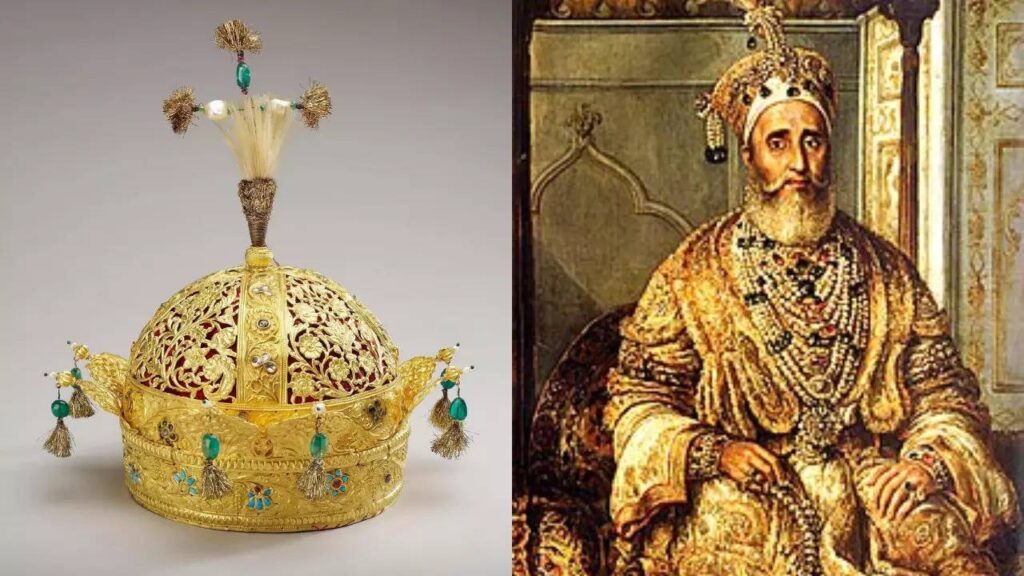The crown of Bahadur Shah Zafar, the last Mughal emperor, is one of the most significant artifacts from India’s royal past. This crown is now part of the Royal Collection in London, where it serves as an enduring reminder of the once-great Mughal Empire, which came to an end in 1857 after the Indian Rebellion. The crown is not only a symbol of Zafar’s rule but also of the empire’s final moments.
The Fate of the Crown After the 1857 Rebellion
The Indian Rebellion of 1857 led to the British defeat of Bahadur Shah Zafar, who had served as the symbolic leader of the uprising. Following his exile to Burma (modern-day Myanmar), a significant auction took place in Delhi, where many of the emperor’s possessions, including his crown, were sold off. The auction marked the fall of the Mughal Empire and the beginning of British colonial rule over India.
Among the items sold at this auction were the emperor’s crown and two throne chairs. Major Robert Tytler, a British officer involved in the Siege of Delhi, purchased the crown and throne chairs as part of his participation in the rebellion. He took these items back to England in 1860.

The Presentation of the Crown to Queen Victoria
Upon his return to England, Tytler was approached by a Bond Street jeweler who offered him £1,000 for the crown. However, Tytler recognized the immense historical value of the crown and chose to present it to Queen Victoria. Understanding its significance as a symbol of Mughal rule, Tytler sent the crown and throne chairs to Queen Victoria through official channels.
The crown was described as a “rich skull-cap” adorned with precious jewels, including gold, rubies, diamonds, emeralds, turquoises, pearls, and velvet. Sir Charles Wood, the Secretary of State for India, detailed the crown’s history and importance in a letter to Prince Albert, Queen Victoria’s consort.
Queen Victoria’s Acquisition
After receiving the detailed description, Queen Victoria personally inspected the crown and throne chairs. She recognized the cultural and historical importance of these relics and decided to purchase them for the Royal Collection. The crown and chairs became part of the collection, where they remain today as valuable pieces of Indian history.

Tytler’s Discontent with the Deal
Despite the recognition and historical significance of the crown, Major Tytler was dissatisfied with the sum he received—£500 for the crown and throne chairs. He had hoped for a larger financial reward or perhaps a position in India for his efforts. However, neither of these expectations materialized, leaving Tytler and his wife, Harriet, disillusioned with the outcome of the transaction.
The Crown’s Lasting Legacy
Today, Bahadur Shah Zafar’s crown is one of the most important pieces in the Royal Collection in London. It is a testament to the craftsmanship of the Mughal Empire and the empire’s eventual fall. The crown, along with the throne chairs, continues to captivate visitors and historians alike, serving as a symbol of the grandeur and demise of one of India’s most storied dynasties.
The crown’s journey from India to England reflects the transition from the Mughal Empire to British rule, making it an artifact of both cultural and historical importance. It stands as a poignant reminder of the end of an era, symbolizing the collapse of the Mughal Empire and the beginning of British colonial dominance in India.
